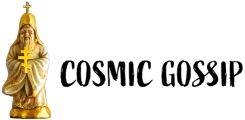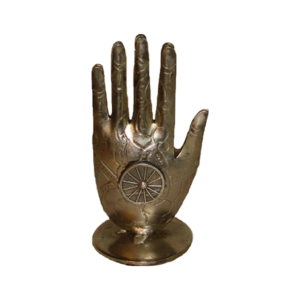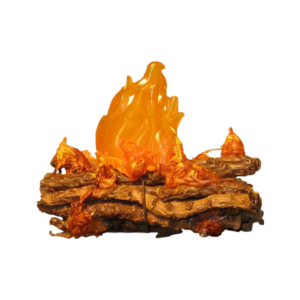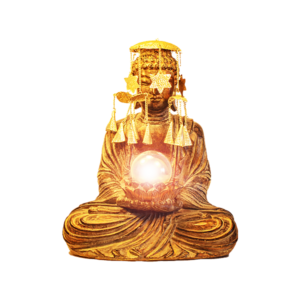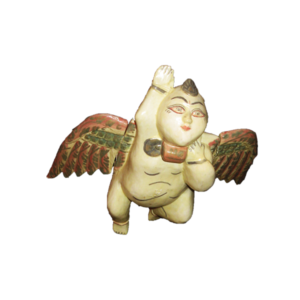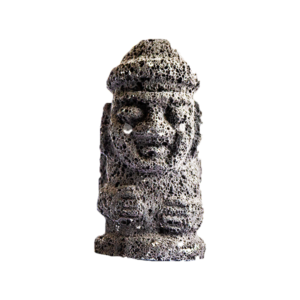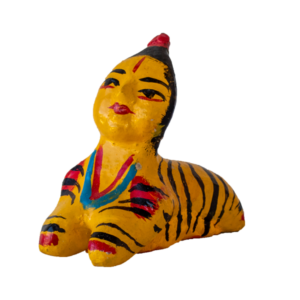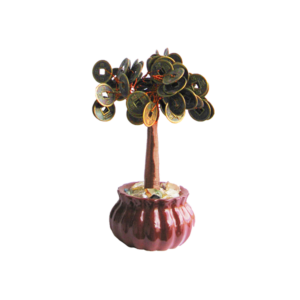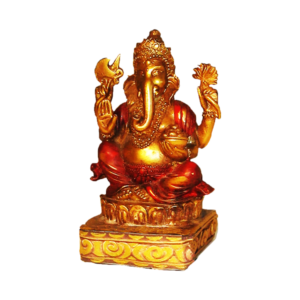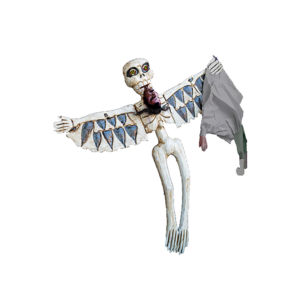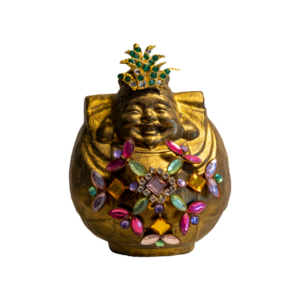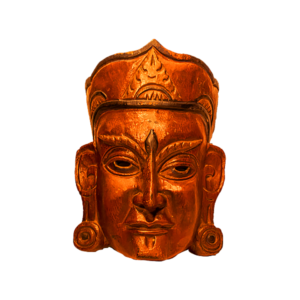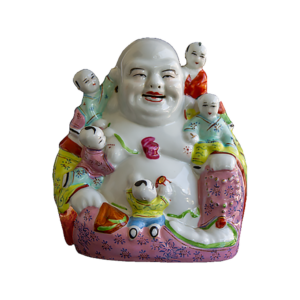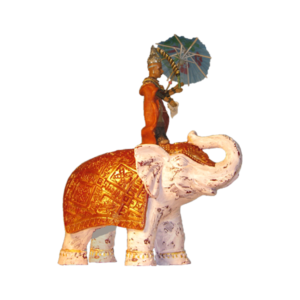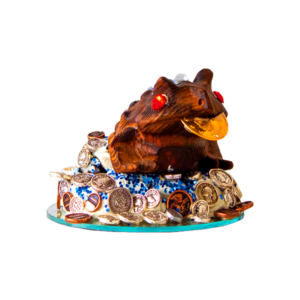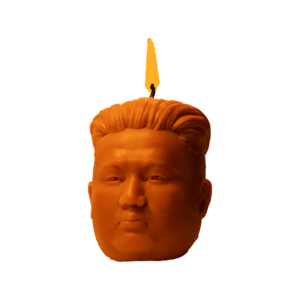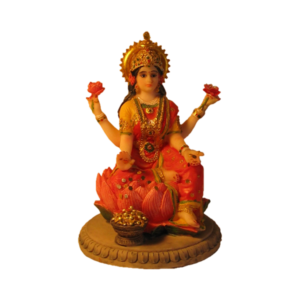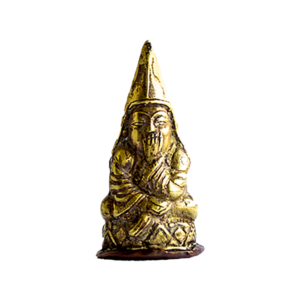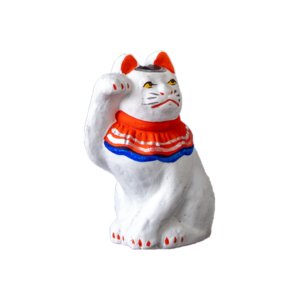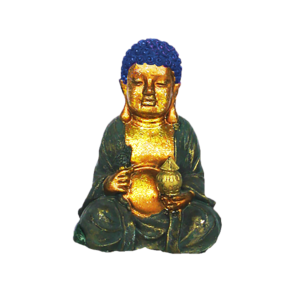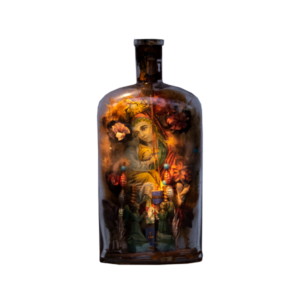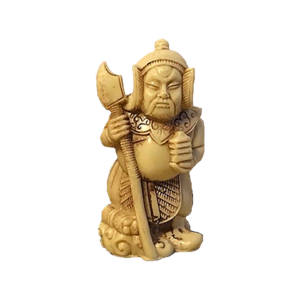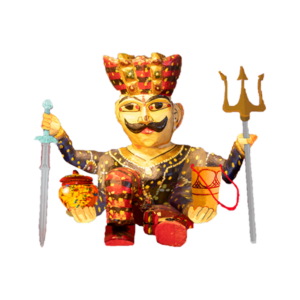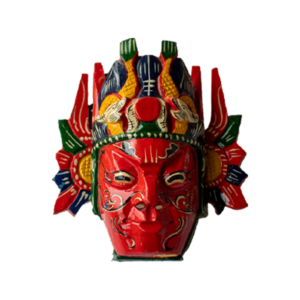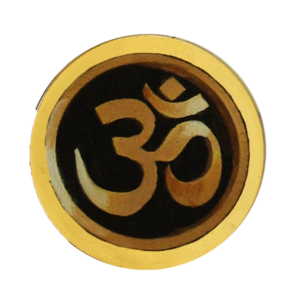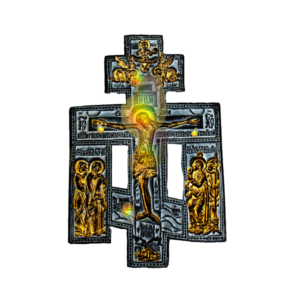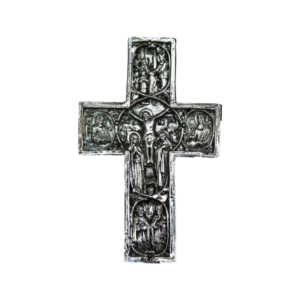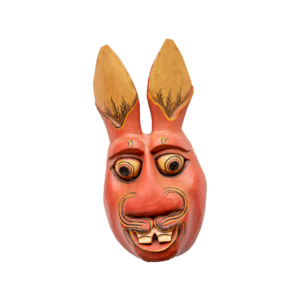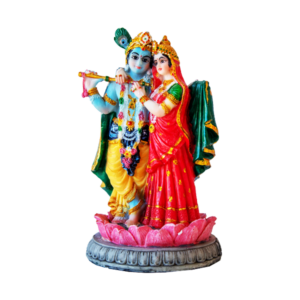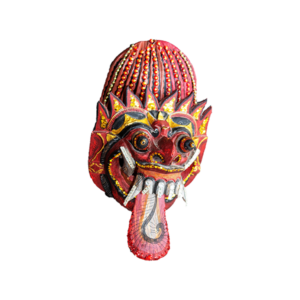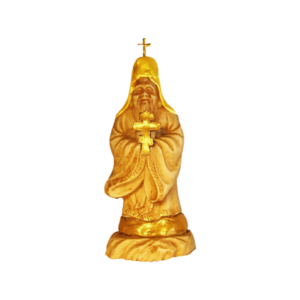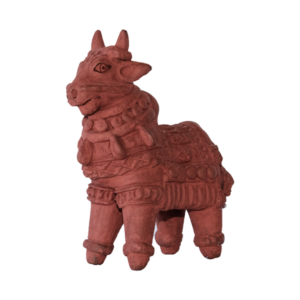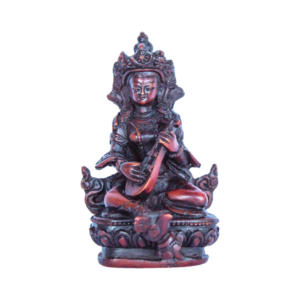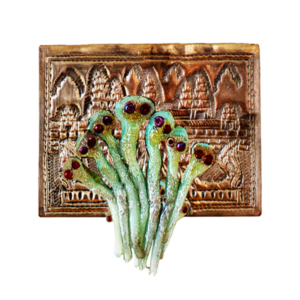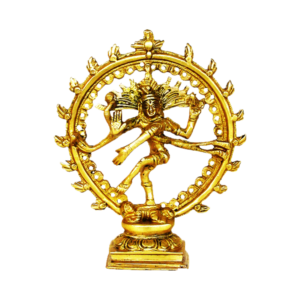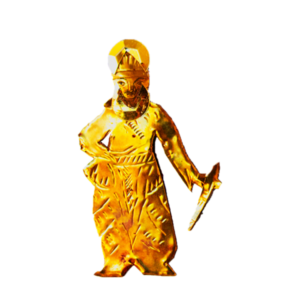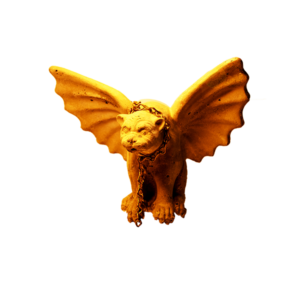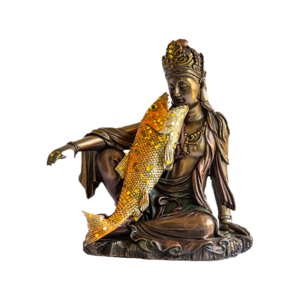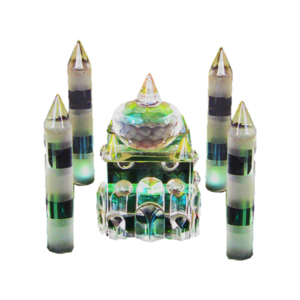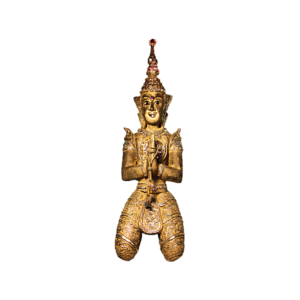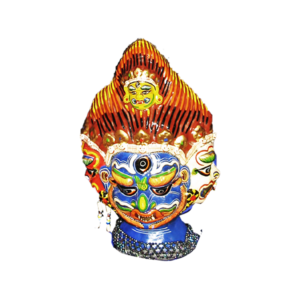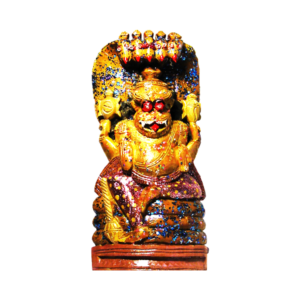Asia
Ahimsa Hand
A symbol of Jainism, an ancient Indian religion whose central tenet is non-violence toward all living creatures (including mosquitos).
Atash
The name for the Holy Fire placed outside every Zoroastrian and/or Parsee temple in India, Azerbaijan, and Iran.
Bactrian Groomsman
A tomb figure from the Tang Dynasty that stretched over most of Central Asia. Bactria is present-day Afghanistan.
Bissu
Plays an important part in the society of the Bugis people (who divide themselves into five genders) of Sulawesi Island, Indonesia.
Black Monkey and White Monkey
The Protective spirits of Barong, a mythological lion-like creature who is king of the spirits in Bali, Indonesia.
Buddha
The founder of Buddhism, one of the world’s major religions, he was born in Nepal around 500 BCE.
Buddhist Travel Altar
Unfolds to show the central figure of the seated Buddha. It is owned by Buddhist travelers from Southeast Asia.
Bulul
The Rice God, placed on roof eaves and in rice paddies, protects the Ifugao folk of the Philippines and their rice harvest.
Cambodian Good-Luck Elephant
Considered a sacred symbol in Cambodia. The rider is winged, indicating a goddess.
Campruch
The mythical creatures of the Maluku Islands of Indonesia are amphibious; their single long horn is used to pierce fish.
Chinthe
Revered by the people of Myanmar, the mythical lion is shown with a gaping mouth, fierce expression, and scrolling tail.
Cold Mask
The mouth is half-open, the eyes half-closed, ready to receive spirits. It belongs to a Sasak shaman from the island of Lombok, Indonesia.
Daikokuten
Always shown smiling and wearing a villager's hat, he is the Japanese god of wealth, agriculture, food, and good fortune.
Demon Chaser
If placed high in a house or temple they drive away evil spirits and are especially popular in Bali, Indonesia.
Dol Harubeang
The "Stone Grandfather” is a basalt statue in the form of a family god, from Jeju Island, South Korea.
Durga
Fierce and protective, the Hindu warrior goddess of India and Nepal is often depicted with a female face and a tiger body.
Ebisu
Born without arms or legs and thrown into the sea by his mother, he is nevertheless one of the Seven Japanese Gods of Fortune.
Eight Immortals
Each of the eight gods holds objects that can create life or destroy evil. They live on five islands in the Bohai Sea in China.
Feng Shui Coins
Often made into money trees in China. Trees from Feng-Shui coins symbolize wealth and abundance.
Fetish Necklace
Believed to bestow magic on the owner, it derives from a centuries-old tradition of the Philippines.
Fortune Teller
Came to Europe with the Roma, but is originally from India, and uses the crystal ball to foretell the future.
Fukurokuju
One of the Seven Lucky Gods in Japanese mythology and the only one able to revive the dead.
Fulushou
Sometimes written as Fu-Lu-Shou, it is the collective name of three major Chinese gods: Fuxing, Luxing, and Shouxing.
Ganesha
Well-known outside India where he originated, he is the elephant-headed Hindu god with four arms.
Garuda
The king of birds in Hindu mythology, he is the symbol of Indonesian airlines, the Thai Royal family, and also known in Malaysia.
Gashadokuro
The winged skeleton bites off tourists’ heads and drinks their blood (hopefully, only in Japan).
Gecko
Considered a symbol of good luck and fertility in Southeast Asia. On Java, an Indonesian island, it is believed to have supernatural powers.
Good-Luck God
Long-eared, bejeweled, and smiling, he is sometimes seen in Macau, a gambling resort on the Chinese coast.
Guan Yu
Revered as a war god, statues of him are in China, Macau, Hong Kong, Taiwan, and Singapore.
Guanyin
Highly revered in China, she is a Boddhisattva, a holy person who helps people reach enlightenment.
Guardian Lion
Believed to give protection, they are usually in pairs and placed in front of palaces, tombs, and government offices in China.
Guardian Soldier
He is one of 8,000 life-size terracotta sculptures depicting the armies of Qin Shi Huang, the first Emperor of China.
Guru Rinpoche
Guru Rinpoche, aka the second Buddha, brought Tantric Buddhism to Tibet, Nepal, and Bhutan.
Handi
Evil spirits which usually appear in the form of a beautiful young female. They inhabit the Maldives, a group of coral atolls southwest of Sri Lanka.
Hindu Zodiac Signs
They are identical to the Zodiac Signs of the West in appearance but differ greatly in their interpretation.
Hotoi Buddha
Usually depicted with children and a sack of goodies, he is known as a kind of Santa Claus in Japan.
Hudoq Mask
Represents the spirits of different animals and humans and protects the inhabitants of Dayak villages in Borneo.
Indra
The king of gods in the ancient Hindu mythology of India, he is always seen riding a white elephant, a symbol of royalty.
Japanese Doll
Revered in Japan as the spirit of a child, it is dressed in period clothing and placed in a river to expel demons.
Jin Chan
A bullfrog with red eyes and three legs is well known as a Chinese charm for prosperity.
Jurojin
The Japanese god of longevity is always seen with a beard and is one of the Seven Gods of Good Fortune.
Kau Chim
Fortune Stick Telling is widespread over Asia and particularly popular in Hong Kong.
Kim Jong-un
Revered all over North Korea, the son of Kim Jong-il has been the Supreme Leader since 2011.
Krishna
Known to Buddhists in Thailand and Hindus in India, the god of love and compassion is traditionally depicted playing the flute.
Lakshman
Went with the god Rama to the island fortress of Lanka, helped defeat its demons, and is especially loved in Thailand.
Lakshmi
The Hindu goddess of wealth. Very popular in India and other parts of Asia. She can be easily recognized by her four arms.
Lama
Recognized by his unique headgear, he often leads a monastic life as a priest of Buddhism in Tibet.
Laotian Spirit House
A shrine that shelters spirits. The people of Laos place votive offerings on the altars, usually in the form of food.
Lost Buddha
Lost, but laughing and wearing a Buddhist robe, so a country known for its cheery Buddhists. Bhutan?
Lotus
Has special significance in both Hinduism and Buddhism as a symbol of purity. It is seen over most of Asia.
Manasa Devi
The protective goddess of snakes. Temples are dedicated to her on the numerous islands of the Sundarban Delta of Bangladesh.
Maneki-Neko
A Japanese talisman believed to bring good fortune, it depicts a cat beckoning with an upright paw.
Mayura Raksha
The Sri Lankan peacock demon that depicts the mighty Rakshasas, supernatural beings said to have ruled Asia at one time.
Medicine Buddha
Said to be the first doctor, depicted with blue hair, and beloved as a healer in Bhutan, Tibet, and Sikkim.
Memento Mori
A keepsake, perhaps from a Russian funeral, with на память (“for memory”) on the bottle’s base.
Merlion
A mythical creature with a lion's head and a fish's body, it is Singapore's national personification.
Mongolian Shaman
Led armies into war and also prayed for heavenly peace as a shaman for Ghenghis Khan in Mongolia.
Mula Jadi
The sky god was the main god of the Batak, who are now mainly Christian. The Batak are mostly from Sumatra, a large island in Indonesia.
Nākoḍā Bhairava
A protective male deity worshipped in Jain pilgrimage sites in Rajasthan, India, and particularly popular with shopkeepers.
Namahage
A loud, angry demon (usually a villager in disguise) he visits Japanese homes on New Year's Eve.
Nuo Opera Mask
Has spiritual meanings in Nuoism, a Chinese folk religion, and used in operas from China and Tibet.
Om
Originating in India and written in the Devanagari script of Hindi, it is revered as a sacred sound and symbol all over Asia.
Orthodox Cross
Its three horizontal crossbeams (the lower one slanted) symbolize the Russian Orthodox Church.
Paul the Apostle
Born a Jew, on his way to Damascus to persecute Christians, he saw a vision of Jesus and became a Christian. (Russian icon)
Pectoral Cross
It has been worn as a sign of church authority since the Byzantine era. The Russian Orthodox Church gives a silver cross to all priests.
Perahu Dukun
A symbolic coffin boat used by Borneo inhabitants (including those from Brunei) to convey the deceased to the afterworld.
Philippine Death Mask
Before the Spanish arrived in the Philippines, Filipinos followed the Chinese custom of gilding the nose and eyes of the dead.
Phoenix Dragon
Said to have originated from the sun, the mythological bird has been a good-luck totem in Taiwan since ancient times.
Pillars of Ashoka
A series of columns erected by Emperor Ashoka for Buddhist monasteries in India, Nepal, Afghanistan, and Pakistan.
Rabbit Mask
It is used in a sacred dance drama honoring agricultural deities, performed in Bali, Indonesia.
Radha-Krishna
A symbol of perfect love for Hindus. Radha is Lord Krishna's wife and the goddess of love and devotion in India.
Rama
Often depicted as an archer with a bow and arrow, he is the hero of the Ramakien, the national epic of Thailand.
Rangda
The ghostly demon queen appears at night, when she scares the inhabitants of Bali, Indonesia.
Rong
The Vietnamese dragon has a dragon's face, a carp's scales, an eagle's claws, and the body and neck of a snake.
Russian Orthodox Priest
Believed in Russia to provide a direct link between God and the congregants of the Orthodox Church.
Sacred Bull
Probably worshipped as a powerful god by the people of the ancient Indus civilization of Pakistan.
Saraswati
The Hindu goddess of knowledge, learning, and the creative arts. Her festival in India is held on the fifth day of Spring.
Seven-Headed Naga
Temples in Cambodia (among them Angkor Wat) display the sacred Seven-Headed Naga ("snake") at their entrance.
Shaman Masks
Used in Korean ceremonial and exorcism rites. Afterwards, they are regarded as sacred objects.
Shinto Deity
Shinto means "Way of the Gods" and deals with ancestor worship. It was the state religion of Japan until 1945.
Shiva
As the Supreme Being, he is the destroyer and transformer within the Hindu trinity of India. Often seen as Nataraja, the cosmic dancer.
Shouxing
A bearded old man, he holds the peach of immortality. Chinese Seniors bow before his statue on their birthdays.
Sikh Dagger
A revered symbol of Sikhism, a religion originating in India, based on the teachings of Guru Nanak.
Simargl
The winged lion of East Slavic legend, widely known in Belarus, Ukraine, and parts of Russia.
South Sea Guanyin
A god revered by fisherfolk in the southern oceans surrounding Malaysia. Fish are crazy about her as well.
Sumba House God
Placed outside houses on the island of Sumba in Indonesia, it contains a dwelling for protective ancestor spirits.
Taj Mahal
A symbol of romantic love ever since it was built in India as a tomb for the beloved wife of an emperor, it blends both the spiritual and physical worlds.
Thephanom
A protective angel of temples in Thailand, often shown kneeling with her hands in prayer.
Tibetan Scroll
The mantra, Om Ah Hum, is written at the top, followed by eight Buddhist symbols revered in Tibet.
Vajrapani
The Buddhist deity, popular in Tibet, is shown with three faces, the blue one being the holiest.
Vishnu
Known in India as the Preserver in the Hindu trinity of gods, he is depicted with four arms and is often seated on the coils of a snake.
Windhorse
Placed on prayer flags and surrounded by mantras in the Tibetan script, the magical horse carries prayers to heaven.
Yaksha
He looks frightening with his pointed ears, painted face, fangs, and bulging eyes, but he is a guardian god of children in Thailand.
